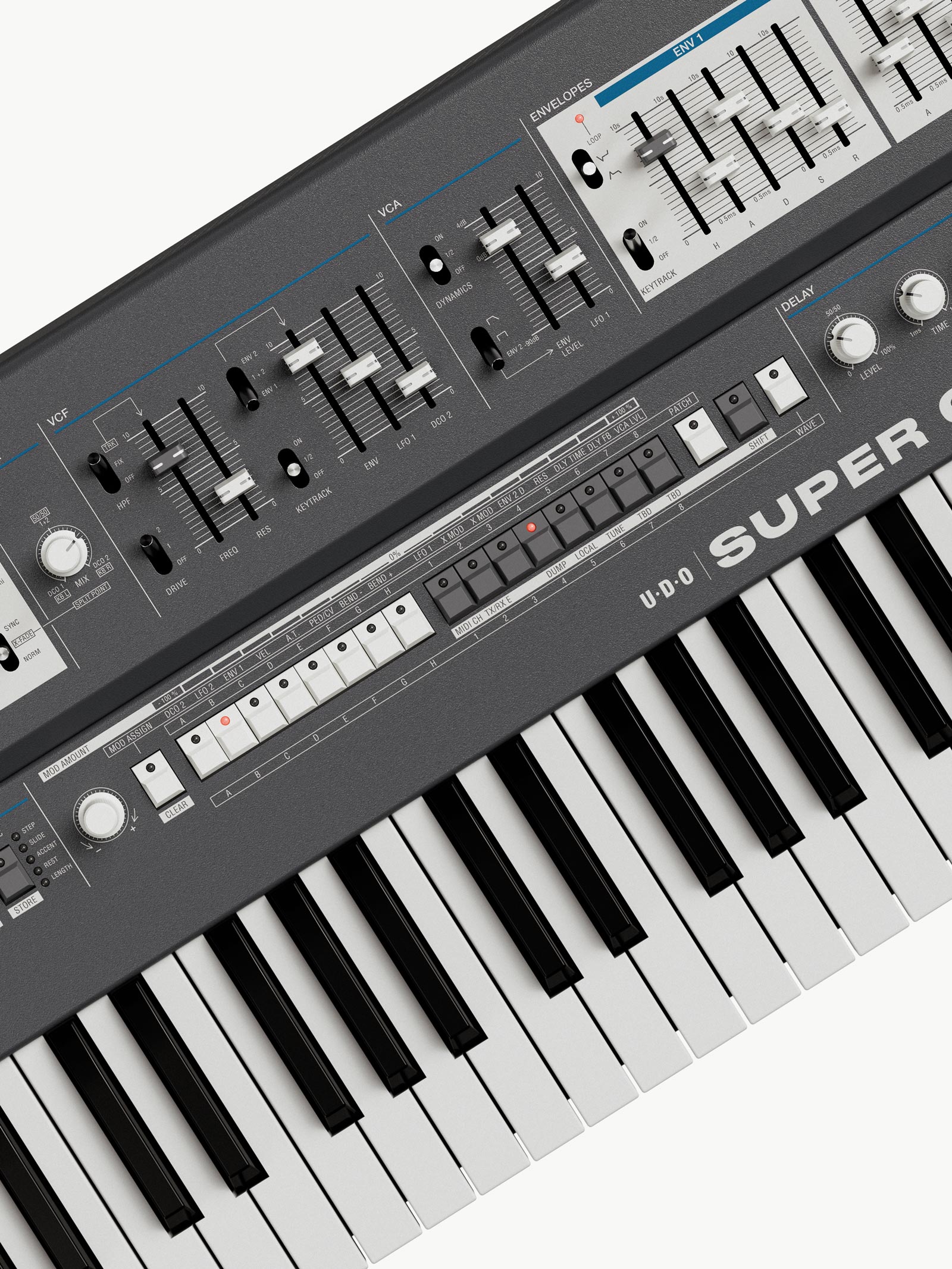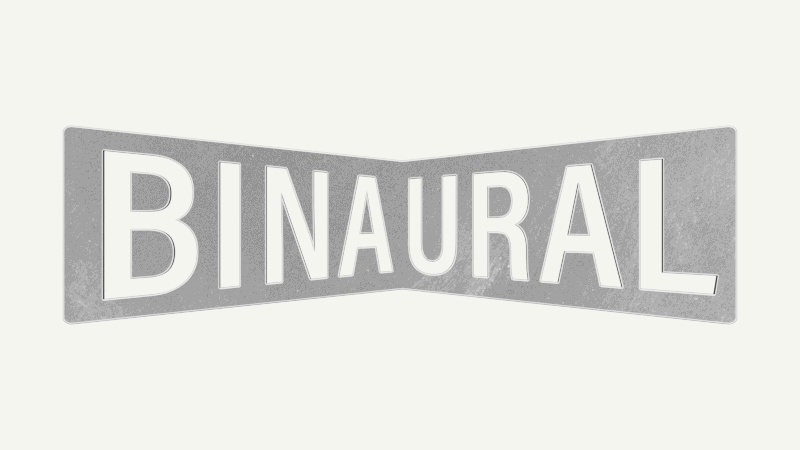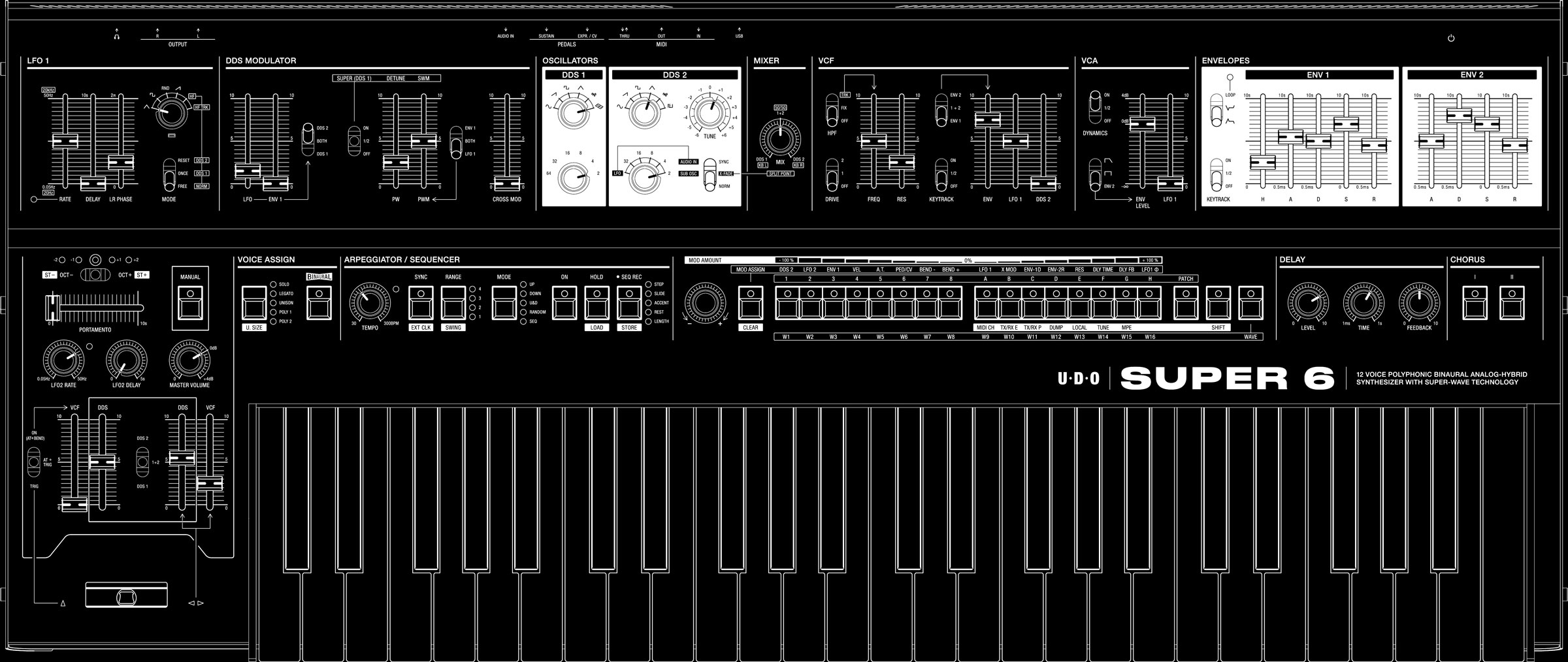
The Super 6 is a 12-voice polyphonic, binaural analog-hybrid synthesizer. A harmonious marriage of state of the art FPGA digital hardware oscillators and voltage controlled analog tech. It is flexible, powerful and refined with a gorgeous analog tone. Rich and evolving textures are easily teased from the unique super-wavetable core and can be shaped and manipulated with the binaural analog signal path and flexible modulation.




The Super 6 is a 12-voice polyphonic, binaural analog-hybrid synthesizer. A harmonious marriage of state of the art FPGA digital hardware oscillators and voltage controlled analog tech. It is flexible, powerful and refined with a gorgeous analog tone. Rich and evolving textures are easily teased from the unique super-wavetable core and can be shaped and manipulated with the binaural analog signal path and flexible modulation.
Although UDO's first production synthesizer, the Super 6 is a result of many years of hard work and numerous iterations of development. Our mission with the Super 6 has been to harmonise what we love about archetypal electronic instrument design with modern, novel synthesis technologies that excel at generating spatially dynamic results.
In Binaural mode, the Super 6 features a true stereo signal path in which the instrument’s twelve voices are twinned to form six stereo ‘super’ voices. Consequently, the left and right channels — and each of the player’s ears — are assigned their own complete synthesizer voice. Parameters for both channels of each super voice may be independently controlled, facilitating the player to create rich and unique stereo images.
The Super 6 is a love-letter to the classic analogue synthesizer, brought firmly into the present with cutting-edge technology under the hood and a no-compromise approach to sound character, build quality and interface design. The rich sound that UDO has been championed for, paired with a robust, compact and inviting form factor with smooth, solid and responsive controls throughout, it cries out to be played.
In Binaural mode, the Super 6 features a true stereo signal path in which the instrument’s twelve voices are twinned to form six stereo ‘super’ voices. Consequently, the left and right channels — and each of the player’s ears — are assigned their own complete synthesizer voice. Parameters for both channels of each super voice may be independently controlled, facilitating the player to create rich and unique stereo images. The effect ranges from subtle to extreme stereo movement, creating an enhanced sense of spatial positioning relative to “conventional” monaural signal-chains panned at their output.


Enormous flexibility at the player's fingertips through simple controls and a carefully designed front-panel. Going deeper, there is an intuitive and immediate modulation system based around the performance area switches. For those who want to go further, every panel control can be targeted for modulation, all simultaneously and all with unique amounts.
The Super 6 is an instrument that is borne of a long-held passion for synthesizers. In designing the Super 6 we wanted to create an instrument that feels familiar at first glance, but offers new and inspiring opportunities when delving deeper. The layout and aesthetic is an homage to some of the classic synthesizers that have inspired us for many years — the instrument's features and capabilities bring these ideas firmly into the 21st century.


Binaural refers to the twin synthesizer signal paths. In Binaural mode, each channel (ear) has a complete synthesizer voice. You can detune and de-phase the left and right oscillators, amplitude and filter (and indeed other parameters) relative to each-other. Ranging from subtle to extreme, this unique feature allows for experimenting with the 'width' of the sound and creates an improved sense of 3D positioning. It has in this sense one “super voices” for every two “conventional” voices.



The Super Series instruments leverage the power of ultra-precision FPGA digital oscillators for a direct and alias-free sound source. This cutting-edge technology combined with an archetypal analog signal path to the outputs provides a rich and flexible sound canvas that can be sculpted for warm basses, expansive pads, and sparkling leads.
